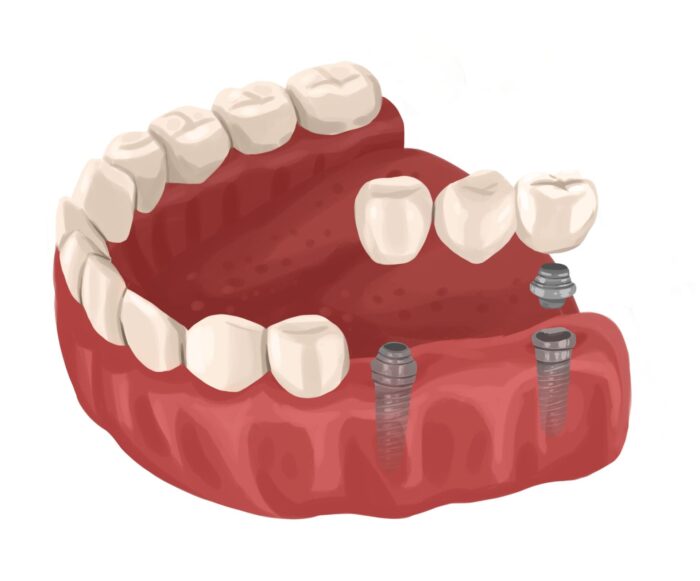Dental Bridge Options: Traditional vs. Implant-Supported
December 14, 2023 9:00 am
Did you know there are two types of dental bridges: traditional and implant-supported? Traditional bridges are a time-tested solution, while implant-supported bridges offer specific advantages under certain conditions. This guide aims to illuminate the differences between these options, helping you determine which type of bridge aligns best with your dental needs and circumstances.
Weak or Missing Teeth
A traditional bridge needs healthy teeth on either side to support the bridge and the extra force exerted by chewing. If you have multiple teeth that are missing, damaged, or weak, a traditional bridge isn’t the best option.
What are the advantages of traditional dental bridges?
Traditional dental bridges offer a reliable and effective solution for replacing missing teeth. One of their main advantages is that they are less invasive than implant-supported bridges, as they do not require surgery. The process is usually quicker and less expensive, making it an accessible option for many patients. Traditional bridges effectively restore the appearance and function of your smile, preventing adjacent teeth from shifting and helping to maintain proper bite alignment. They are also suitable for patients who may not be candidates for dental implants due to insufficient bone or other health conditions.
Dental-implant-supported bridges use implants to bridge the gap between teeth, so even if you’re missing multiple teeth, you can still get a fully functional bridge.
How long do traditional dental bridges typically last?
Traditional dental bridges typically last between 5 and 15 years, though they can last longer with excellent care. The longevity of a dental bridge depends on factors like oral hygiene, regular dental check-ups, and lifestyle habits. Proper brushing, flossing, and avoiding excessive stress on the bridge—such as grinding teeth or chewing on hard objects—can help extend its lifespan. Over time, the natural wear and tear or changes in the supporting teeth may require the bridge to be replaced or adjusted.
When is a bone graft needed for an implant-supported bridge?
A bone graft procedure may be necessary when there is insufficient bone density or volume in the jaw to support one or more dental implants. This can occur due to bone loss from missing teeth, gum disease, or other factors like trauma or congenital defects. A bone graft procedure adds or regenerates bone tissue in the jaw, creating a stable foundation for dental implants. This is crucial for ensuring the long-term success and stability of the implant-supported bridge, as it needs strong bone support to withstand normal chewing forces.
What are the advantages of implant-supported bridges?
Implant-supported bridges offer several advantages over traditional bridges. They provide a more stable and secure solution since the implants are anchored directly into the jawbone, similar to natural tooth roots. This prevents bone loss and maintains the structure of the jaw over time. Implant-supported bridges also don’t rely on adjacent teeth for support, preserving the health of surrounding teeth. They offer greater comfort and functionality, allowing for normal chewing and speaking, and typically have a longer lifespan than traditional bridges.
Longevity and Preservation of Natural Teeth
Dental implants leave the surrounding teeth undisturbed. With a traditional bridge, sometimes healthy neighboring teeth need to be filed so the prosthetics fit properly. Further, a traditional bridge usually only lasts around 15 years, but with proper care, a dental-implant-supported bridge can last up to twice that length.
Jawbone Atrophy
When a tooth is missing, the root is no longer in place to stimulate the jawbone. This can lead to atrophy or the loss of the bone in the jaw. With an implant-supported bridge, the implant acts as the tooth’s root. This can lead to stimulation of the jawbone in a fashion similar to that of the natural tooth that was there previously. This stimulation of the jawbone helps to stave off atrophy and keep your jawbone healthy and strong.
Family Dentistry Near East Contra Costa County, CA!
It’s important to note that while each bridge has its advantages and disadvantages, the two function on about the same level. Some patients may not wish to have a procedure as invasive as a dental implant, while others may have it as their only option. At Robert J. Freitas II Family Dentistry, we’re here to support you on your journey to oral health. If you have questions about implants or would like to schedule another type of appointment, give us a call at our Brentwood, CA office!
Contact UsImage from Authority Dental under CC 2.0
Categorised in: Restorative Dentistry

